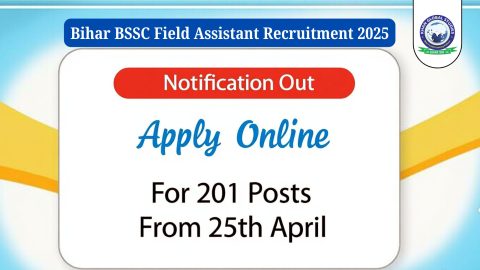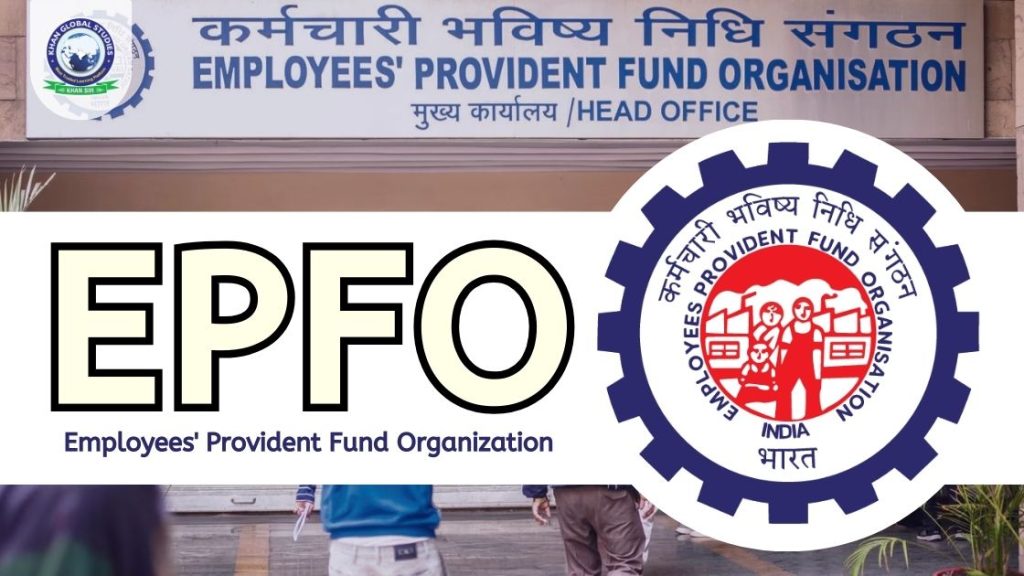The Employees’ Provident Fund Organization (EPFO) is a statutory body established by the Indian Government. Being the country’s largest social security organization, it primarily encourages people to save for retirement. EPFO comes under the purview of the Ministry of Labor and Employment and was established in 1951. Recently, the government has increased the EPF interest rate to 8.15% for the financial year 2022-23.
What is EPFO?
Employee Provident Fund (EPF) is one of the most profitable investments for salaried individuals in India. The Employees’ Provident Fund Organization (EPFO) is a statutory body functioning under the Ministry of Labor and Employment of the Government of India to implement the social security schemes prescribed under the Employees’ Provident Fund. Under this scheme, people are given benefits related to provident fund, pension and insurance.
History of EPFO
The Employees’ Provident Fund came into existence in 1951 with the enactment of the Employees’ Provident Fund Ordinance. The EPF Ordinance was later replaced by the EPF Fund Act, of 1952. The EPF Bill was introduced in Parliament in 1952 to provide provident funds to working employees. In factories or private institutions.
The law governing Employees’ Provident Funds is now called the Employees’ Provident Funds and Miscellaneous Provisions Act, 1952. This Act is applicable throughout India except Jammu and Kashmir. Under the EPF Act 1952, 12% of the employee’s basic salary is deducted as PF. The company where you work also deposits the same amount of money in your PF account. If you change the company in future, you can merge the PF account of the previous company with the PF account of the new company. There is no tax on doing so.
Structure of EPFO
The Act and all its schemes are administered by a tripartite Board called the Central Board of Trustees (EPF). The Board comprises representatives of both the Central and State Governments, employers and employees. Under the leadership of the Ministry of Labor and Employment, Government of India, the Central Board of Trustees (EPF) manages the 3 schemes.
- Employees’ Provident Fund Scheme, 1952 (EPF)
- Employees’ Pension Scheme, 1995 (EPS)
- Employees’ Deposit Linked Insurance Scheme, 1976 (EDLI)
EPFO is an organization set up to assist the Central Board of Trustees (EPF) and is under the administrative control of the Ministry of Labor and Employment, Government of India.
EPFO’s Work
EPFO helps the Central Board of Trustees provide provident fund schemes, pension schemes and insurance schemes for registered institutions in India.
- Implementation of the Employees’ Provident Fund Act across the country
- Maintenance of personal accounts
- Settlement of Claims
- Investing money
- Ensuring prompt pension payment
- Updating Records
The decision-making body of EPFO is the Central Board of Trustees (EPF). EPFO has taken several digital initiatives in recent times to simplify EPF account operations for both employers and employees.
What are the benefits of the EPF scheme?
The benefits of the Employee Provident Fund are as follows:
- Saving for the future: The EPF scheme enables individuals to save money for a longer period.
- Convenient Deductions: Instead of investing huge amounts, deductions are made from the employee’s monthly salary. This allows significant savings over an extended time.
- Financial assistance in emergencies: The EPF scheme can provide financial assistance to employees during unexpected circumstances.
- Retirement Savings: By participating in the EPF scheme, a person can save money for his retirement, so that he can live a comfortable life later.
- Unemployment: In a case where the employee loses his/her current job due to any reason, these funds can be used to meet the expenses.
- Resignation/Leaving the job: After resignation, the employee is free to withdraw 75% of his EPF fund after one month from the date of leaving the job and the remaining 25% after 2 months of unemployment.
- Death: In case of the death of the employee, the amount collected along with interest is given to the employee’s nominee, thereby helping the family tide over difficult times.
- Employee Disability: If the employee is no longer in a position to work then he can use these funds to help him overcome difficult times.
- Retrenchment: In case of sudden retrenchment from the job, this fund can be used by the employee until he gets another suitable job.
EPF Interest Rate
The current interest rate on the provision fund is 8.15%. It is easy to calculate the interest credited to the EPF account at the end of the financial year. This interest amount is added to the contributions made by both the employer and the employee to determine the overall balance in the account.
What are the services of EPFO?
Services provided by EPFO-
1. Universal Account Number (UAN)
EPFO has introduced UAN which enables the linking of multiple EPF accounts (Member IDs) allotted to the same member by different employers. The UAN program was launched in October 2014 as part of the Pandit Deen Dayal Upadhyaya Shramev Jayate program. UAN is a unique 12-digit number given by EPFO to an employee. To avail of the online services provided by EPFO, employees are required to activate their UAN on the UAN portal.
UAN portal provides many services like an updated UAN card, updated EPF passbook, facility to link previous member ID with current ID, SMS regarding credit of contribution to PF account and auto-triggered transfer request on change of employment. Facility of.
2. Inactive Accounts Online Helpdesk
The online helpdesk of inactive accounts on the EPFO website was established in February 2015 and has made tracking of old or inactive EPF accounts easier. It helps EPF members track their dormant PF accounts, settle them or transfer them to their current account.
3. Online EPF Transfer
While EPF transfer was earlier possible online under the ‘Online Transfer Claim Portal’, with the introduction of UAN, the process of transfer has been modified and moved under the ‘Unified Portal’. With this, EPF transfer is done easily from one account to another.
4. Online PF Withdrawal
If an employee does not get a job for 60 days after resigning from the previous job, he is allowed to withdraw PF. EPFO has enabled online PF withdrawal with a simple process for UAN linked to Aadhaar.
5. Online Registration of Establishments (OLRE)
Registration of the institution with EPFO has been made web-based. PF Code Allotment Letter has also been made available online and more and more employees are getting its benefit.
6. PF Payment Online
All establishments must make EPF payments online. EPFO has arranged a tie-up with some banks to collect EPFO dues and the participating banks are SBI, PNB, Indian Bank, Union Bank of India, Bank of Baroda, HDFC Bank, ICICI Bank, Axis Bank, and Kotak.
7. Centralized Software for Generating Coverage Certificates for International Workers
EPFO has launched an online form through its centralized software to generate Certificate of Coverage (CoC) for EPF members working in countries that have Social Security Agreements with India.
8. SMS Service/Alert and Missed Call Service
The SMS service and missed call service were launched to provide better access to EPF accounts to EPF members who have activated their UAN. Members can get details of KYC status, last contribution, and total EPF balance by sending an SMS to 7738299899 with the first three letters of their preferred language in EPFOHO UAN format.
9. EPF Claim Status
Once a member decides to withdraw their EPF funds, they can log in to the EPFO portal and submit the request online. The member can also track his EPFO claim status online through the same portal. Alternatively, the employee can check the status of the claim by giving a missed call to 011-22901406 from his registered mobile number. Apart from this, EPF claim status information can also be obtained using the UMANG App.
How to activate the EPF UAN number?
To avail of EPF facilities online, UAN has to be activated through the EPF member login portal. To activate your EPF UAN, follow the below steps:
- EPL members must first visit the EPF website.
- You have to click on the “Activate UAN” option present in the right corner of the home page.
- As soon as the EPF member home dashboard opens, you have to enter your UAN/Member ID along with your Aadhaar number, name, date of birth and mobile number as per EPFO records.
- You will then have to enter the captcha code and a PIN will be sent to your mobile number registered with EPFO.
- OTP has to be entered to verify and activate UAN online.
- After this another SMS will be sent to confirm the activation of UAN.
- Once UAN is activated, you can check the provident fund online.
How to file EPF e-Nomination online?
EPFO has made it mandatory for EPF members to file EPF nomination details because if an EPF member dies during his tenure, his family will get the PF. It can be done both online and offline. For e-nomination, you will have to fill in information like Aadhaar number, name, date of birth, gender, relationship, address, bank account and photo. Then the submitted details have to be verified using the e-sign facility.
How to update EPF KYC online?
- Visit the EPF member portal and log in using UAN and your password.
- As soon as the new page opens, click on KYC from the dropdown menu under the ‘Manage’ section.
- Then details like name, PAN number, Aadhaar, and bank details will have to be updated.
- Finally, save it and it will appear to you as Pending KYC until it is verified from the other side.
How to check your EPF balance online?
- First of all, you have to go to www.epfindia.gov.in.
- Click on ‘For Employees’ under the “Services” section.
- After this click on the ‘Member Passbook’ option. – Now enter your UAN, password and captcha code.
- Log in to your EPF account and select ‘Member ID’ to view your EPF member passbook.
- You can download the EPF passbook by clicking on the “Download Passbook” option.
EPF Withdrawal
EPF can be withdrawn partially or completely. The full withdrawal is allowed when a person retires or he remains unemployed for more than 2 months. At the same time, partial EPF withdrawal is allowed in some circumstances. You can claim withdrawal by filling out the EPF withdrawal online form. Follow the steps given below to fill out the EPF withdrawal form and start claiming online:
- First of all, sign in to the UAN Member Portal with your UAN and password.
- Click on the ‘Online Services’ tab from the menu bar and select ‘Claim (Form-31, 19 and 10C)’ from the drop-down menu.
- Then the member details will appear on the screen. You need to enter the last 4 digits of your bank account and click on ‘Verify’.
- To sign the Certificate of Undertaking you have to click on Yes and proceed.
- Now you have to click on the option ‘Proceed for Online Claim’.
- To withdraw your money online, you have to choose the ‘PF Advance (Form 31)’ option.
- Then a new section of the form will open, in which you will see the ‘Purpose for which advance is required’ button and on this, you will have to select the required amount and the address of the employee.
- Later you have to click on certification and your application will be submitted.
- Depending on the purpose for which you have filled the form, you may also be required to submit scanned documents.
- The employer will then have to approve your withdrawal request, after which the money will be withdrawn from your EPF account.
- EPFO will send an SMS to your registered mobile number. Once the claim is processed, the money will be transferred to your bank account.
Although no time limit has been set by EPFO, the money can come to your bank account within 15-20 days.
How to transfer EPF online?
- Log in to the EPFO member portal using your UAN and password.
- Click on the ‘Online Services’ tab on the main menu of the home page and select the ‘Transfer Request’ option.
- Then a new dashboard will open in which your details will be visible. For the claim process, you have to verify your date of birth, EPF date of joining etc.
- After verification, you will have to go to the home page of the EPFO members portal again. There you have to select the option of former or current employer. Then you have to select the previous employer option and then give the details through which you want to make the claim.
- After filling in the details, an OTP will come on your mobile. You will have to verify your identity by entering the OTP. Only then will the request be submitted. An online filled form will be generated. You must sign the form and send it to the previous or current employer.
- The employer will also receive an online notification regarding the EPF transfer request. EPFO will process the claim only when your company sends the claim to EPFO digitally after verifying your employment details.
- After submitting the request, you can check the EPF transfer claim status by going to ‘Track Claim Status‘ below the menu.
How to link an Aadhaar with an EPF account online?
- First of all, go to the EPFO member portal and log in using your credentials.
- Go to the ‘Manage’ option from the menu bar and select the ‘KYC’ option from the drop-down list.
- Select ‘Aadhaar’ from the document list and enter your Aadhaar number and your name as per Aadhaar.
- Save and proceed.
- Your Aadhaar data will then be verified with UIDAI data.
- After successful approval, your Aadhaar will be linked to your EPF account.
EPF Tax Rules
If an EPF member withdraws his provision fund before 5 years, he has to pay tax. This money is deducted like TDS. If the PAN card of the PF hold is not linked then 20 percent TDS is deducted and if your PAN card is linked then only 10 percent TDS is deducted.
FAQs
Question: What should be the eligibility for EPFO?
Answer: Employees who are drawing salaries are eligible.
Question: Which schemes are run by EPFO?
Answer: 3 schemes (Employees Provident Fund Scheme, Employees Pension Scheme, Employees Deposit Linked Insurance Scheme) are being run by EPFO.
Question: What is the work of EPFO?
Answer: EPFO provides pension, insurance etc. facilities to the employees of India.




